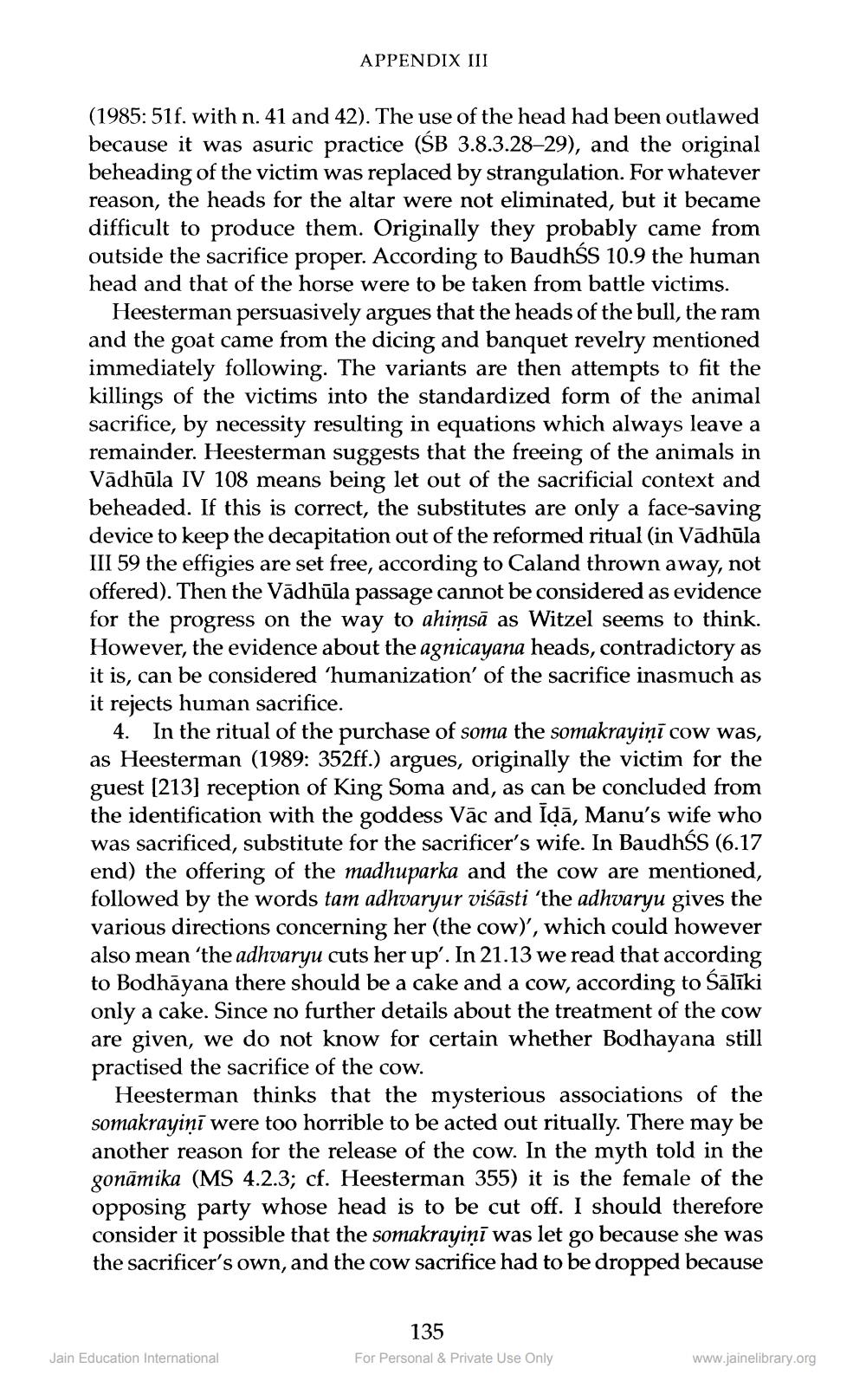________________
APPENDIX III
(1985: 51f. with n. 41 and 42). The use of the head had been outlawed because it was asuric practice (SB 3.8.3.28–29), and the original beheading of the victim was replaced by strangulation. For whatever reason, the heads for the altar were not eliminated, but it became difficult to produce them. Originally they probably came from outside the sacrifice proper. According to BaudhśS 10.9 the human head and that of the horse were to be taken from battle victims.
Heesterman persuasively argues that the heads of the bull, the ram and the goat came from the dicing and banquet revelry mentioned immediately following. The variants are then attempts to fit the killings of the victims into the standardized form of the animal sacrifice, by necessity resulting in equations which always leave a remainder. Heesterman suggests that the freeing of the animals in Vādhūla IV 108 means being let out of the sacrificial context and beheaded. If this is correct, the substitutes are only a face-saving device to keep the decapitation out of the reformed ritual (in Vadhūla III 59 the effigies are set free, according to Caland thrown away, not offered). Then the Vādhūla passage cannot be considered as evidence for the progress on the way to ahimsā as Witzel seems to think. However, the evidence about the agnicayana heads, contradictory as it is, can be considered 'humanization' of the sacrifice inasmuch as it rejects human sacrifice.
4. In the ritual of the purchase of soma the somakrayiņi cow was, as Heesterman (1989: 352ff.) argues, originally the victim for the guest (213) reception of King Soma and, as can be concluded from the identification with the goddess Vāc and Idā, Manu's wife who was sacrificed, substitute for the sacrificer's wife. In BaudhśS (6.17 end) the offering of the madhuparka and the cow are mentioned, followed by the words tam adhvaryur visāsti 'the adhvaryu gives the various directions concerning her (the cow)', which could however also mean 'the adhvaryu cuts her up'. In 21.13 we read that according to Bodhāyana there should be a cake and a cow, according to Sālīki only a cake. Since no further details about the treatment of the cow are given, we do not know for certain whether Bodhayana still practised the sacrifice of the cow.
Heesterman thinks that the mysterious associations of the somakrayiņī were too horrible to be acted out ritually. There may be another reason for the release of the cow. In the myth told in the gonāmika (MS 4.2.3; cf. Heesterman 355) it is the female of the opposing party whose head is to be cut off. I should therefore consider it possible that the somakrayiņī was let go because she was the sacrificer's own, and the cow sacrifice had to be dropped because
135 For Personal & Private Use Only
Jain Education International
www.jainelibrary.org




